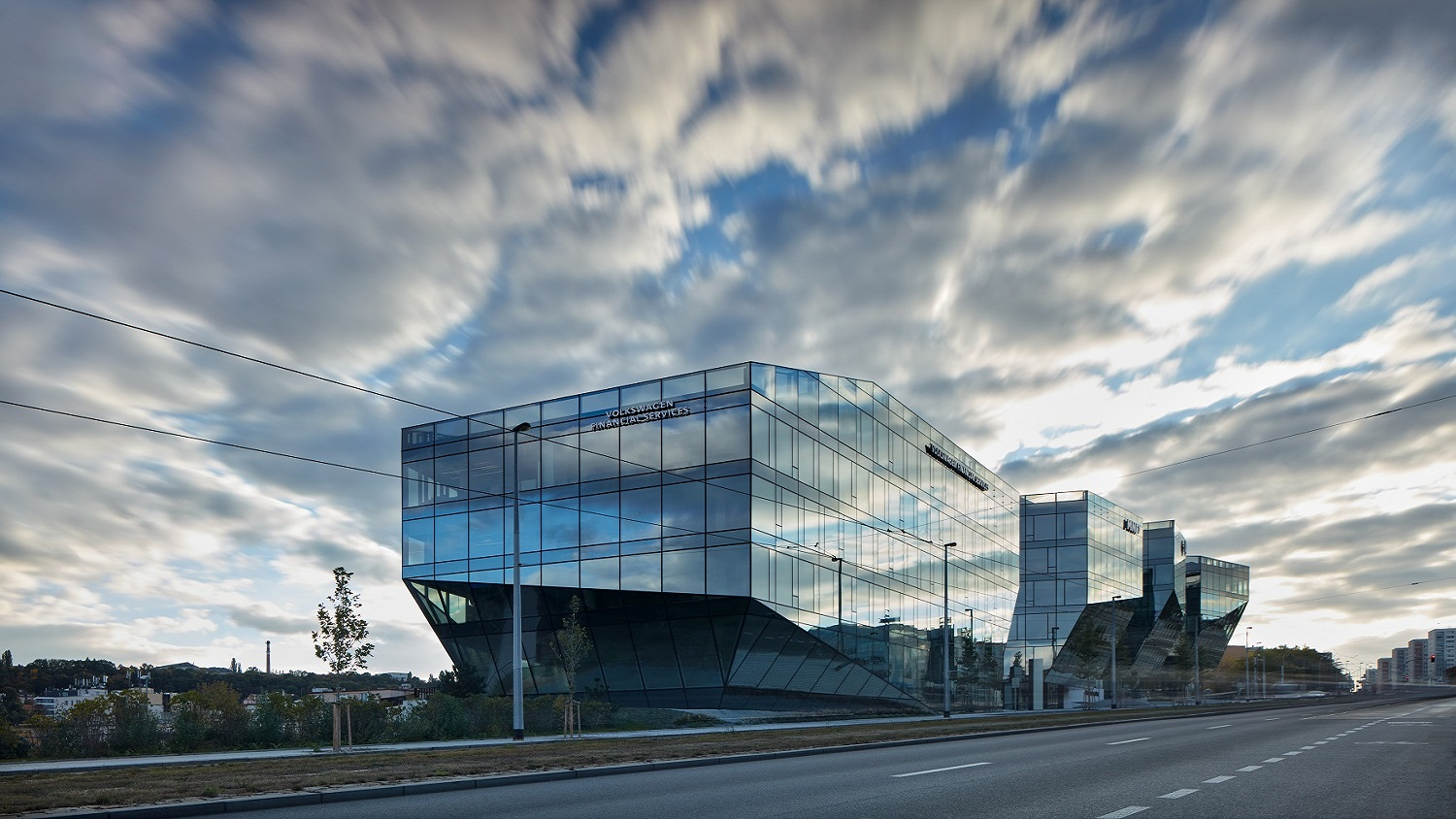
How will the current macroeconomic situation affect investment activity and further development within individual sectors, from offices to industrial and logistics complexes to retail real estate? All this is shown in CBRE's latest analysis of the Czech commercial real estate market, which also provides an updated outlook for 2023.
Investment market: the largest downward pressure on prices since the financial crisis in 2008
CBRE expects the total Czech commercial real estate investment volumes to reach €1.8-1.9 billion in 2022, representing a 5-10% decrease y-o-y. The investment activity slowdown was significant mainly in the second half of the year as Q1 was strong with almost €1 billion transacted. Since Q2, there was a lot of transactions repriced or put on hold. The decrease in the investment volume was caused by a more uncertain economic outlook and rapidly increasing financing costs, with EURIBOR swap rates jumping by more than 300 bps. Higher borrowing costs have led to a cap rate decompression across all European regions and property types. Czech prime yields are up by 25-75 bps since Q1 2022. Prime retail yields, having already seen expansion during Covid, experienced less movement relative to Office and Logistics.
Investors are now paying far closer attention to the movement of swap rates, loan margins and LTV ratios as these factors have a significant impact on net cash flows and naturally on the entry rate assumption. Tighter financial conditions and a deteriorating economic outlook will weigh on commercial real estate investment for the rest of this year and into the first half of 2023. While increasing construction costs and extraordinary rental indexation is driving rental growth, the capital values will stagnate as the cap rates decompress. Interest rates are expected to peak in the coming months and start to come down as inflation eases and economic conditions worsen. However, ultra-low interest rates are unlikely to happen in 2023. In 2023, the investment volume is forecasted to decline by 5-15% y-o-y.
Vítězslav Doležal, Director of Investment Properties, CBRE, adds: “The Czech Republic is one of the least risky emerging markets due to its conservative fiscal and monetary policies, low debt, and an equally prudent and liquid banking sector. Its growth potential benefits from a diversified industrial base, a high-skilled but cost-competitive labour force, and competitive exports. Czech real estate investments still provide attractive yield returns in comparison to Western European markets. The appetite for assets remains solid, with limited new development seen in all segments. Core logistics and offices remain the most sought-after property types. Cross-regional capital flows to Europe remained stable on a quarter-on-quarter basis led by American capital; however only a small part of the capital flow to be deployed in the Czech Republic as most transactions are expected to continue to be led by domestic capital.”
Office market: market moved to a tenant´s market
During the first three quarters of 2022, CBRE monitored a recovery in office leasing activity in Prague compared to the same period last year. During Q1-Q3 2022, take-up in Prague was up 10% compared to the same period last year, and up 27% compared to the same period in the pre-pandemic year 2019. In Q1-Q3 2022, take-up was driven by IT companies which accounted for 31% of take-up. However, a slowdown in the tech sector is anticipated in 2023. CBRE is already monitoring that the leasing activity is slowing down.
Hybrid working has become the new normal. Some level of hybrid working is now accepted by most employers and expected by employees. Simon Orr, Director in A&T-Offices, describes: “Among the biggest tenants space reductions and consolidations are prevalent, so we see second-hand space being released to the market. Rising energy and service costs are having a major impact on companies’ financial and real estate planning, so caution will remain throughout 2023. However, at the same time, we are seeing the success of new premium office projects on the market showing that some companies are willing to pay above-market rents in the most sought-after locations.”
The vacancy rate stood stable throughout the first three quarters of 2022 and currently stands at 8.1%. There is currently 192,000 sqm under construction out of which 136,000 sqm is scheduled to be delivered in 2023. This relatively high pipeline for 2023, which together with the slowing demand and the fact that there are hardly any newcomers to the Prague market might lead to growth in vacancies in the coming year. The different usage of space, such as laboratories or schools, should help us to keep vacancies at healthy levels.
Prime rents grew by 10% since the end of 2021. CBRE expects the slowdown of prime rental increases throughout 2023. During 2022 Prague’s office market shifted more in favour of tenants, and landlords are pressed to improve incentives in many projects. CBRE anticipates this trend to continue along with a massive increase in service charges and discussions about caps for rental increases.
Industrial & logistics market: record-low vacancy rates
The industrial & logistics market stands on a strong foundation. Even if we are now seeing a slowdown in demand from e-commerce and parcel delivery companies, demand from logistics and production remains strong. Currently, CBRE is monitoring strong demand from heat pump and solar panel producers. The activity on the market is expected to stay strong in 2023, however below the record levels of 2021 and 2022.
Jan Hřivnacký, Head of Industrial Leasing, comments: “In the first three quarters of 2022, 1.2 mln. sqm of industrial & logistics space was newly leased – it exceeded the take-up in any other first three quarters of the year in the past. With such a high demand and a record low overall vacancy rate at below 1% in Q3 2022, prime rental levels remain under upward pressure. In Q3 2022, prime rents were up by 25% y-o-y, however, we expect the stabilisation of rents throughout 2023.”
As of Q3 2022, there was nearly 1,160,000 sqm under construction, with around 342,000 sqm scheduled for delivery by the end of 2022. In Q3, CBRE recorded an increase in speculative construction to approx. 34%, however, a slowdown in speculative construction in the upcoming year is expected.
A tight labour market is leading to the greater implementation of automation, and CBRE anticipates that this trend will accelerate next year. Sustainability became a priority for logistics occupiers, influencing the current wave of development in a way not seen before. Unfortunately, the slow permitting process in the Czech Republic may prolong transactions going forward.
Retail market: back to bricks-and-mortar stores
Shopping centres performed well in the first three quarters of 2022. Overall footfall stood approx. at 10% below the level of 2019, however, turnovers exceeded it by more than 10%. However, the significant growth in sales above the pre-pandemic level was strongly influenced by high inflation. In Prague and major cities, the positive impact of spending by Ukrainian refugees also had a positive impact on the retail sector.
Jan Janáček, Head of Retail Sector and A&T-Retail, adds: “Post-pandemic changes in shopping behaviour were reflected in a lower frequency of purchases, with a higher average shopping basket. Although footfall and, to an even greater extent, retail sales have been recovering gradually from the pandemic, the market is threatened by the downside risks related to customer price inflation, and the increases in costs which will affect the market going forward.”
Greater work flexibility, but also a reassessment of life values, is influencing shopping patterns, not only in the online and in-store context but also changing the customer structure, for example in city centres, where there is a noticeable decline in people commuting to offices on weekdays.
In the current “post-Covid era”, CBRE monitors a visible spillover of online sales back to brick-and-mortar stores. E-commerce sales are not reaching levels during the pandemic and the ratio of online sales to total sales has declined. But still, with an e-commerce penetration of 17%, the Czech Republic has one of the highest e-commerce penetration rates within Europe.
Although shopping centre development will once again be limited in 2023, one new shopping centre (i.e. Smíchov City) providing 6,300 sqm is expected to be delivered. Retail Park development activity is expected to continue on the market.



